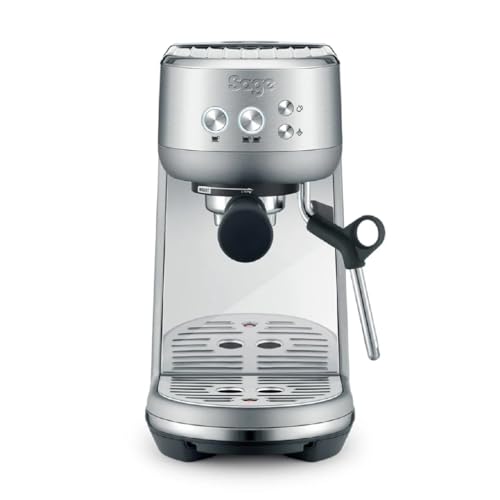
Home Use Espresso Machines: A Comprehensive Guide
Espresso machines have actually ended up being a staple in lots of homes as coffee lovers look for to replicate café-quality brews in the comfort of their kitchen areas. The increase in popularity has caused a varied market filled with different models, functions, and prices. This post intends to offer a helpful introduction of home use espresso machines, assisting readers navigate their options successfully.
Understanding Espresso Machines
Espresso machines work by forcing hot water through finely-ground coffee under high pressure, leading to a focused coffee beverage referred to as espresso. There are numerous types of espresso machines classified based upon their developing approaches and level of automation. The most common types include:
Manual Espresso Machines: These need the user to control the pressure and water circulation, permitting a more hands-on coffee-making experience.
Semi-Automatic Espresso Machines: These offer automatic control over water pressure, while the user manually grinds and tamps the coffee.
Automatic Espresso Machines: With the push of a button, these machines immediately manage the circulation of water, making it much easier to brew espresso with consistent outcomes.
Super-Automatic Espresso Machines: These all-in-one machines deal with grinding, tampering, developing, and even milk frothing, making them perfect for users trying to find benefit.
Capsule or Pod Machines: These use pre-packaged coffee pods to produce espresso with minimal effort, but they restrict option in developing strategies and flavors.
Table: Comparison of Espresso Machine Types
| Type | Control Level | Alleviate of Use | Cleaning Level | Ideal For |
|---|---|---|---|---|
| Manual | User-controlled | Moderate | High | Coffee perfectionists |
| Semi-Automatic | Partial automation | Moderate | Moderate | Home baristas |
| Automatic | Completely automated | Easy | Low | Busy individuals |
| Super-Automatic | Totally automated | Really simple | Very low | Convenience candidates |
| Capsule/Pod | Totally automated | Extremely easy | Extremely low | Casual drinkers |
Key Features to Consider
When selecting a home use espresso machine, it's important to think about numerous features that can considerably affect the quality of espresso and user experience.
Pressure: Look for machines that supply at least 9 bars of pressure, as this is considered optimal for developing espresso.
Boiler Systems: Single vs. dual boiler systems figure out temperature stability and the capability to brew espresso and steam milk simultaneously.
Grinder: Integrated grinders permit freshly ground coffee, which improves flavor. Consider machines with adjustable grind settings.
Milk Frother: For those who take pleasure in cappuccinos and lattes, a built-in steam wand or automatic frother is crucial.
Size and Design: Consider your kitchen area space and visual preferences. Machines are available in different sizes, from compact to big setups.
Price: Home espresso machines can vary from a couple of hundred to several thousand dollars, so it's important to establish a budget before checking out options.
Benefits and drawbacks of Home Use Espresso Machines
| Pros | Cons |
|---|---|
| Benefit of developing coffee in your home | Preliminary investment can be high |
| Quality of espresso is typically exceptional | Requires some ability, particularly with manual machines |
| Ability to experiment with tastes | Maintenance and cleansing can be labor-intensive |
| Can conserve money in the long run | Not all machines will fit every coffee preference |
Maintenance and Cleaning Tips
Keeping an espresso machine is crucial for lengthening its life and ensuring constant brew quality. Here are some useful pointers:
Regular Descaling: Minerals from water can construct up in the machine. Descale every 1-3 months, depending upon water firmness.
Daily Cleaning: Rinse portafilters, baskets, and steam wands after each use to prevent coffee oils from constructing residue.
Use Filtered Water: This can help in reducing mineral accumulation and improve the taste of coffee.
Replace Gaskets and Seals: These elements may break with time and should be replaced to maintain pressure and performance.
Check out the Manual Espresso Machine: Each machine has particular care instructions; following these will make sure durability.
Frequently Asked Questions About Home Use Espresso Machines
Q1: What is the best budget espresso machine?The best budget espresso machine typically depends on private requirements, however models like the DeLonghi EC155 or the Breville Bambino are popular among users for supplying fantastic value. Q2: How long do home espresso machines usually last?With appropriate maintenance, home espresso machines can last anywhere from 5 to 15 years, depending on the quality of the machine and frequency of use. Q3: Can I make cappuccinos and lattes with any espresso machine?While most espresso machines can make cappuccinos and lattes, having a reliable
steam wand or frother is necessary for achieving the right milk texture.
Q4: Are super-automatic machines worth the investment?For those who prioritize convenience and quick brewing, super-automatic machines can be worth the financial investment, though they might lack some customizability in brew strength and taste. Q5: What kinds of coffee beans are best for espresso?While individual preference contributes, beans identified as" espresso "blends are typically roasted darker, creating abundant flavors and a creamy texture when brewed.
Investing in a home espresso machine can change the day-to-day coffee regimen into something special, elevating home brews to café quality. By understanding the different kinds of machines, key features to consider, upkeep needs, and weighing the
benefits and drawbacks, consumers can make educated decisions that suit their private choices. As the espresso culture continues to grow, no matter the choice, every brew can be a delicious experience waiting to be relished.
